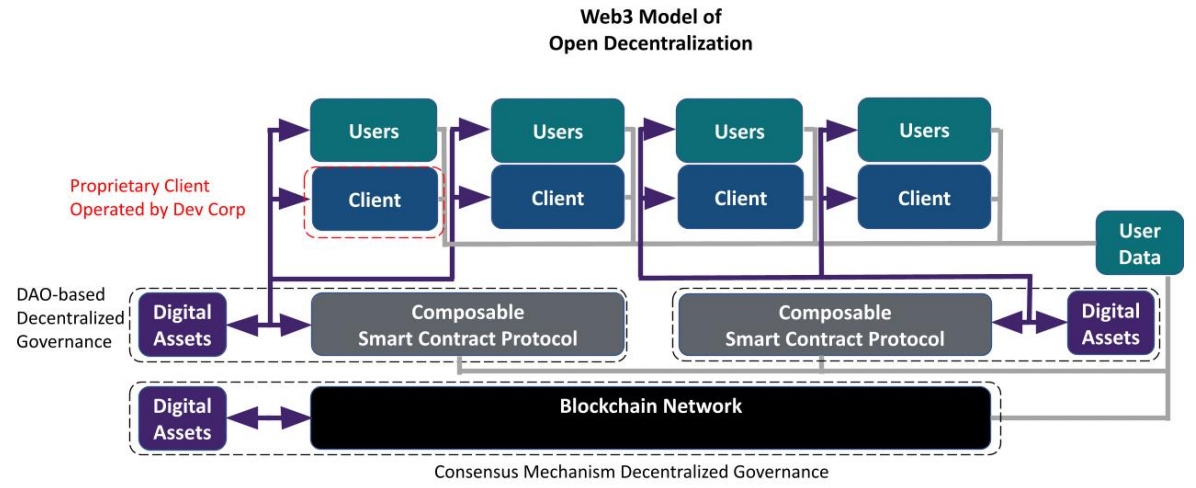Product Decentralization
The $CARROT Ecosystem is designed to be a “Web3 Open Decentralized network” detailed in the diagram below:

The $CARROT Web3 system will introduce novel, composable smart contract protocols deployed to an existing programmable blockchain network. Independent developers (ESPs) will build and operate applications (Clients) on top of the smart contract protocols (owned and managed by the DAO community) and be able to use and interact with the Digital Assets. Data belonging to users, understood as customers and contributors, will be owned by the user and will be transferable out of the network. All of the technology will be open sourced and hosted on a decentralized file system (such as IPFS). Incentives for participation and contribution will be consistently built into the network, as it will be a fundamental aspect of establishing network effects.
The existing waste logistics platform will serve as an important client layer to accelerate $CARROT ecosystem adoption. It represents significant resources to the ecosystem for the startup phase. Engaging with External Service Provides and the Carrot DAO community will enable rapid adoption and ecosystem growth. We will introduce the NFT auction in the 2H of 2024 to prove the utility of waste codification and token redistribution to recycling contributors, as well as begin our community building and marketing efforts. Smart Contracts for the minting of TRCs and TCCs, as well as Liquidity Pools and redistribution of $CARROT tokens, will be established by the end of the 1H of 2025. During the course of the 2H of 2024 we expect to roll-out Carrot Auditor features, the Carrpt Registry, and CIPs for DAO Management. The Carrot Fndn’s founding team’s goal is to reach sufficient decentralization by the 1H of 2025.[74]
73. A16z - Principles & Models of Web3 Decentralization, p.17
74. Variant Fund - Sufficient Decentralization: A Playbook for web3 Builders and Lawyers by Marc Boiron, Chief Legal Officer at dYdX Trading
Last updated